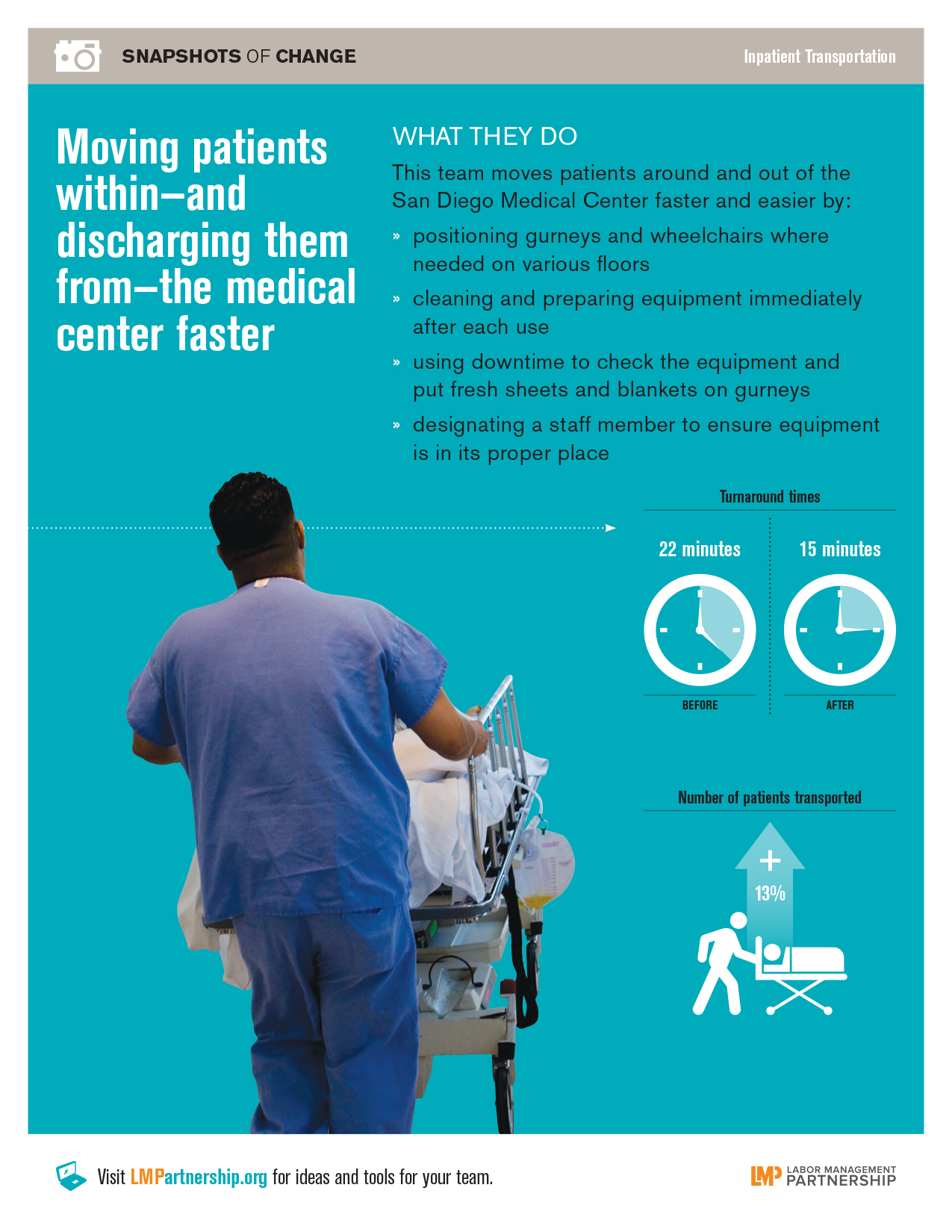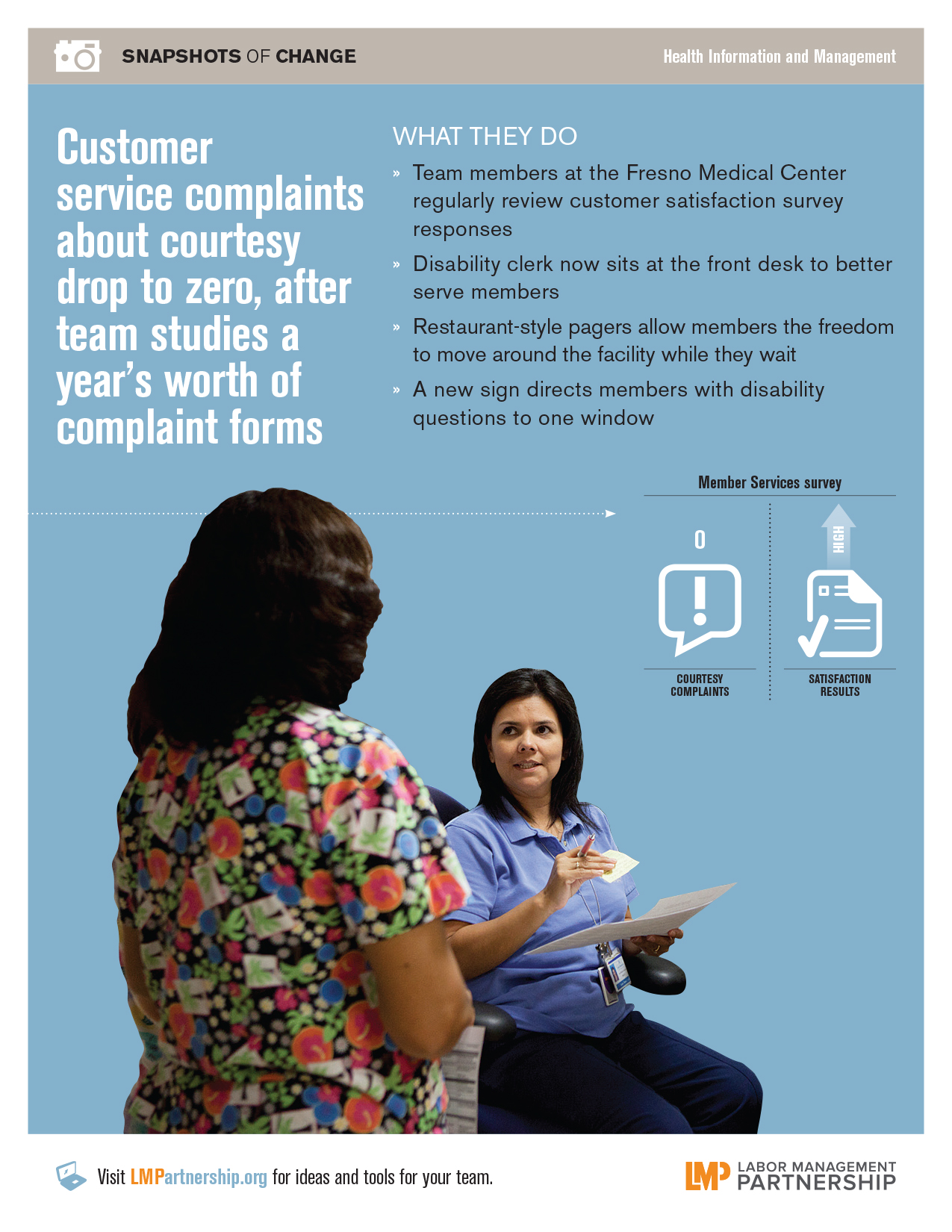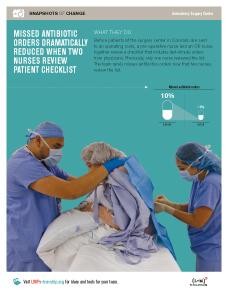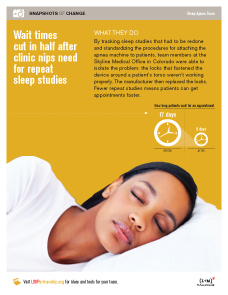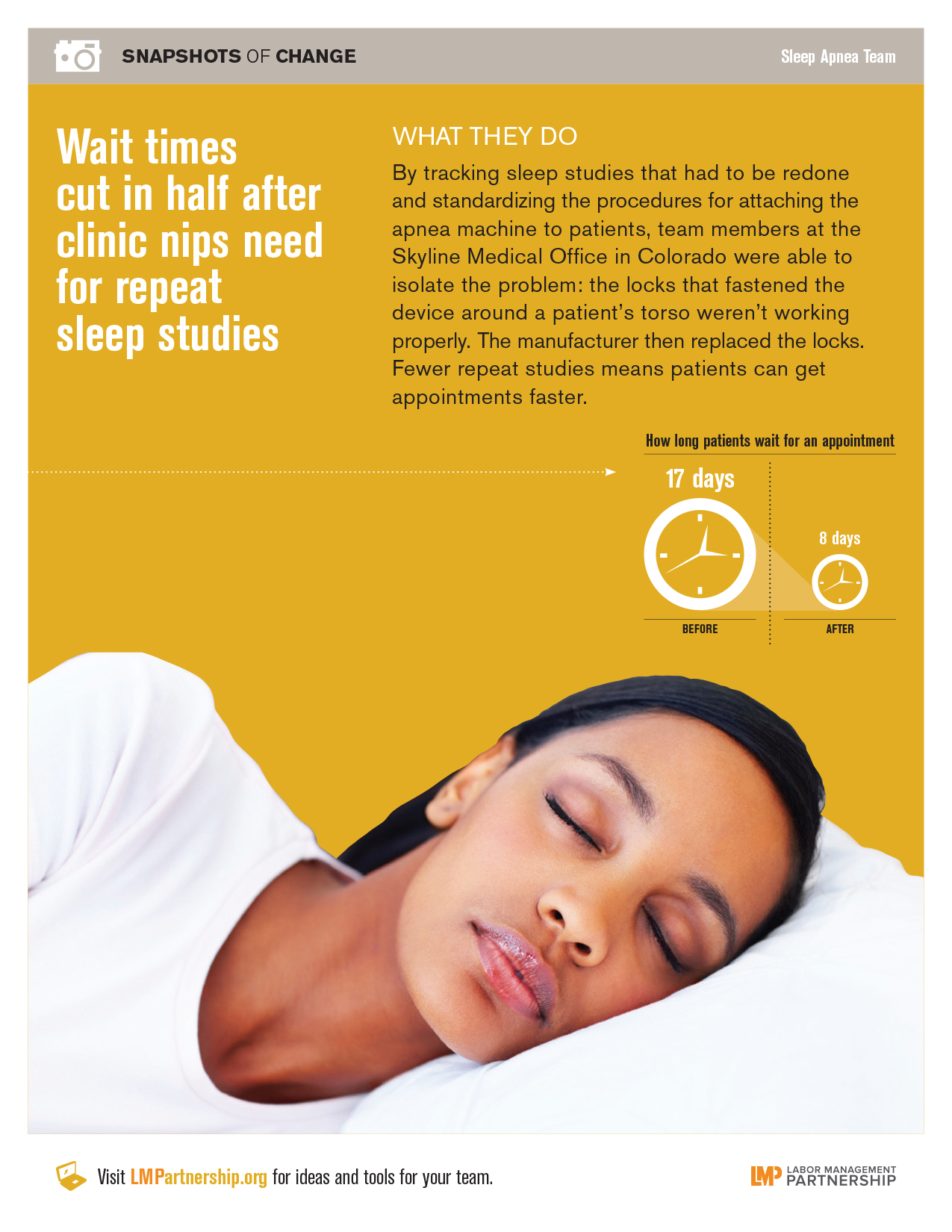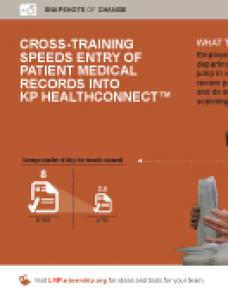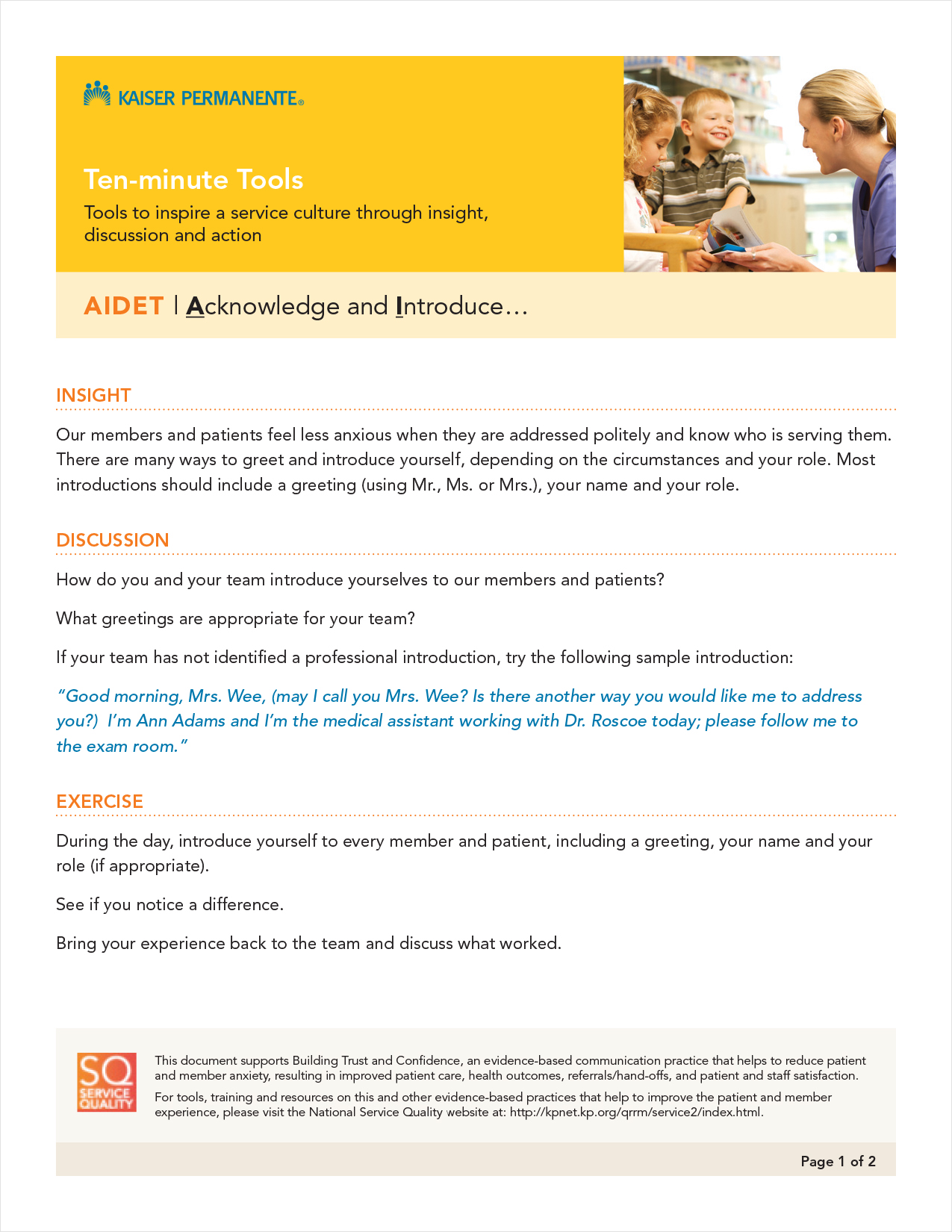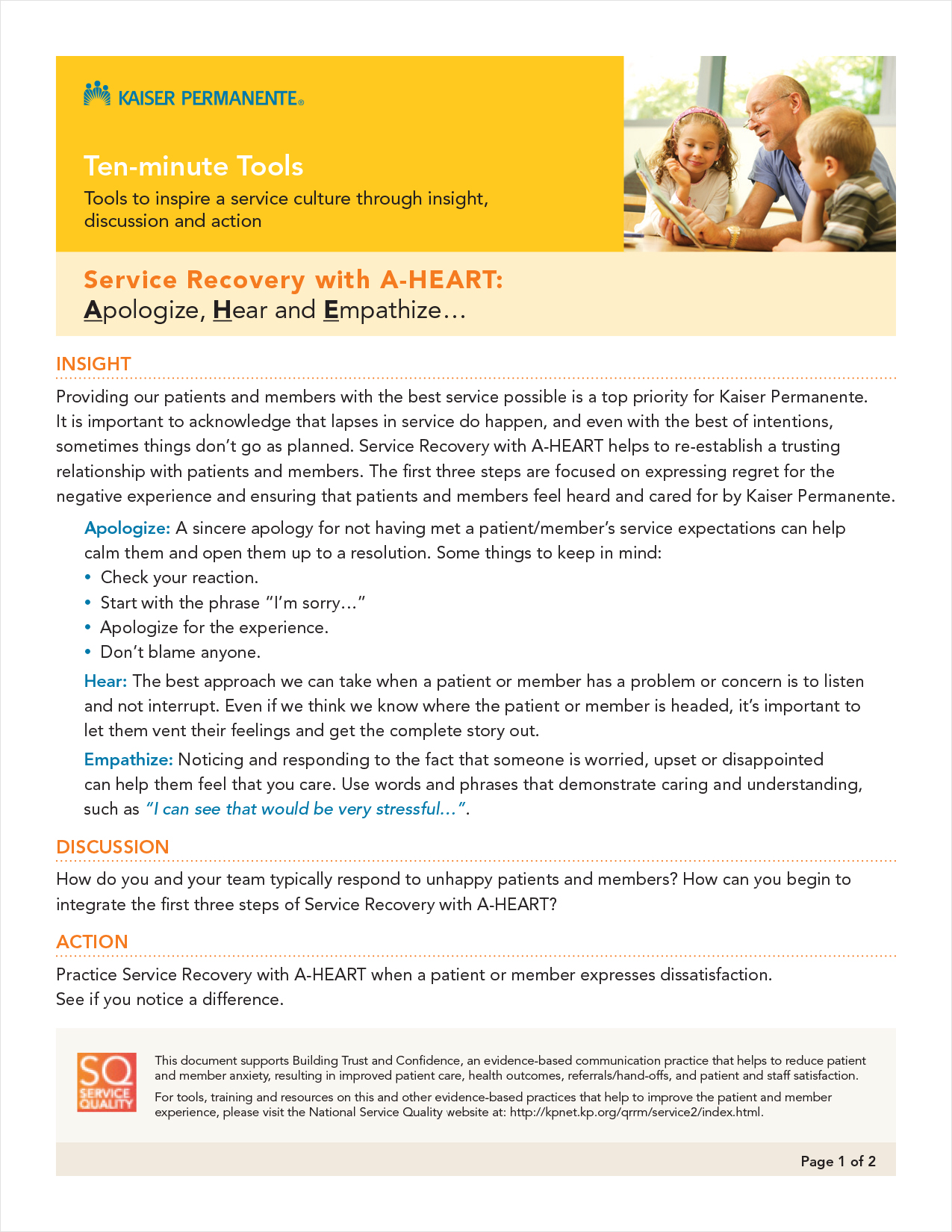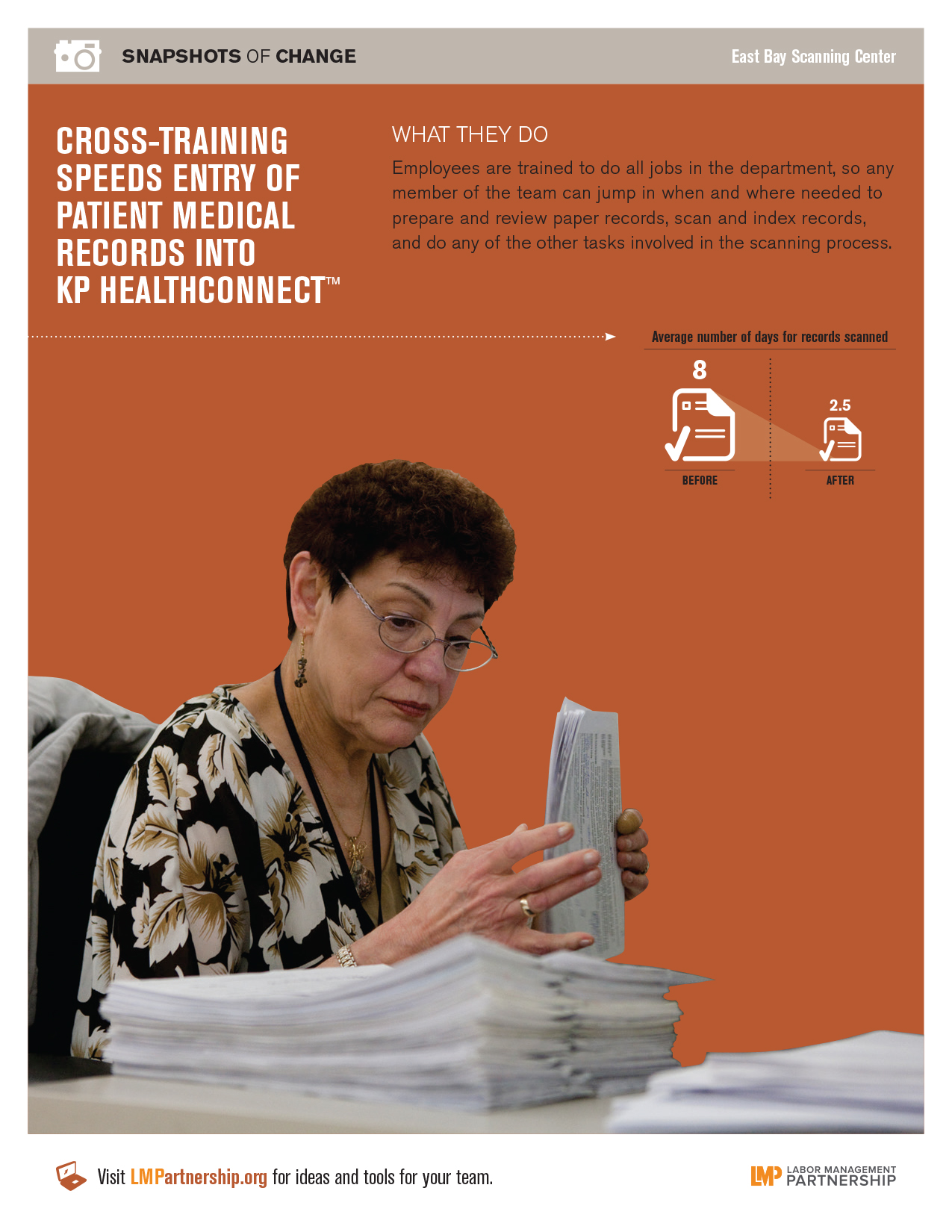Behind-the-Scenes Service
In 2011, the Medical Records unit-based team in the Northwest received 1,222,361 pages of outside records that required indexing into patients’ electronic medical records—a staggering 725,000 more pages than it received in 2010.
Yet team members met and mastered the challenges facing them, whittling down an enormous backlog and reducing the turnaround time for processing from 62 days in December 2010 to three days by December 2011—benefiting both their internal customers and KP’s members and patients. And they’re sustaining that success.
The steady increase had been debilitating. Overtime hours went through the roof, with more than 2,450 hours logged in 2010. The 37 team members work 24 hours a day, seven days a week and have seven different work classifications. Staff members were worn out. Piles of paperwork were stacked high, waiting for processing. Morale was at an all-time low.
The case illustrates vividly that service is not just a bedside issue at Kaiser Permanente. For a variety of reasons, many KP members see outside providers—and when those providers submit paper or electronic records with the patient’s medical information to Kaiser Permanente, the records have to get indexed into KP HealthConnect. If there’s a delay, the patient’s regular physician may be missing important information the next time the member is seen at KP.
“When the clinician needs medical information on their patients in order to treat their current medical condition, we’re able to provide updated and accurate records,” says the team’s union co-lead, Kathleen Boland, a data quality clerk and SEIU Local 49 member. And, she notes, members aren’t having to repeat critical tests and procedures, saving them time and money.
Things started to change when, through unit-based team training, team members learned such skills as process mapping and how to understand data. They created SMART goals (specific, measurable, attainable, realistic/relevant, time-bound), started huddling and developed a greater understanding of roles and responsibilities.
The team receives more than 700 different types of documents, so variation was rampant. Team members developed cheat sheets to standardize how documents should be prepped for indexing and to get everyone to use the same process for each task. They also cross-trained and helped each other out when someone was on vacation or ill.
“In the beginning,” says Bruce Corkum, RN, a UBT resource team specialist, “they didn’t share the work. Then they started understanding how they could help each other work toward the same goal.”
Not only did the backlog disappear, but the need for overtime is nonexistent now, they’ve improved attendance and “morale has improved,” says Burgandy Muzzy, a health records clerk and member of SEIU Local 49. People are happy to be at work.
“People are talking about us in a positive way now,” says manager Debbie Lang, “instead of as ‘those people who lose everything.’ ”

